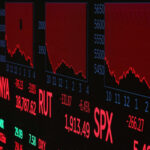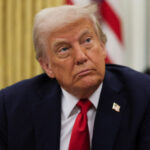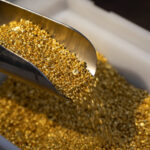
By Rae Wee
SINGAPORE (Reuters) – The dollar edged broadly lower on Tuesday but traded in a narrow range, as investors remained cautious ahead of key U.S. inflation data due later in the day just as the Federal Reserve kicks off its two-day monetary policy meeting.
In Asia, China’s yuan fell to a six-month low after the central bank lowered a short-term lending rate for the first time in 10 months, in a bid to restore market confidence and prop up its stalling post-pandemic recovery.
The onshore yuan bottomed at 7.1680 per dollar, its lowest since last November, and last traded at 7.1618.
Its offshore counterpart was last 0.2% lower at 7.1709 per dollar, having weakened to a fresh six-month low of 7.1782 earlier in the session.
“China’s slowdown is partly due to policymakers’ intention to push ahead with structural reforms,” said analysts at ANZ in a note.
“Monetary easing is merely a tentative measure to engineer a soft landing for the traditional economy.”
Market attention now turns to the U.S. Labor Department’s CPI report due later on Tuesday, which is expected to show inflation cooled slightly in May and could give the Fed room to pause its aggressive rate-hike cycle when it announces its interest rate decision on Wednesday.
Markets are currently pricing in a nearly 84% chance that the Fed will keep rates on hold at this week’s meeting, according to the CME FedWatch tool.
Those expectations kept risk sentiment buoyant, pinning the U.S. dollar near multi-week lows against the risk-sensitive Australia and New Zealand dollars.
The Aussie rose 0.23% to $0.6766, after hitting a one-month top of $0.6774 in the previous session.
The kiwi steadied at $0.6126, not far from Monday’s peak of $0.6153, its highest since May 24.
“If inflation is above the consensus, then I think the market could put in a greater chance of a Fed rate hike this week,” said Joseph Capurso, head of international and sustainable economics at Commonwealth Bank of Australia.
“(But) I think the Fed’s probably not going to hike … and they’ll sound a bit dovish, and that’s going to push the U.S. dollar back down again.”
Elsewhere, sterling rose 0.16% to $1.25315, after scaling a one-month peak of $1.2600 on Monday on hawkish comments by Bank of England policymakers, who said interest rates may have further to rise as inflation remains sticky.
The euro peaked at $1.0792, its highest since May 24, with traders also focused on Thursday’s interest rate decision from the European Central Bank, following its policy meeting.
“A 25 bp rate hike from the ECB at this week’s policy meeting is considered to be a done deal,” said Jane Foley, head of FX strategy at Rabobank.
“It is widely assumed that the ECB is closing in on the end of its rate hiking cycle meaning that the market will be trying to evaluate not just how high rates will go, but how long they will remain at their peak.”
Against the Japanese yen, the dollar slipped 0.06% to 139.52.
The U.S. dollar index fell 0.17% to 103.40, languishing near Monday’s trough of 103.24, its lowest since May 23.
The Bank of Japan (BOJ) is due to announce a monetary policy decision on Friday and is expected to maintain its ultra-dovish stance and yield curve control (YCC) settings.
“We now expect the BOJ to change its YCC policy in July, but as in the past, it may effect this change without signalling ahead,” said Chong Hoon Park, head of Korea and Japan economic research at Standard Chartered Bank Korea.
“The central bank will likely continue to send a dovish message or one of no intention of policy change until it changes direction.”
(Reporting by Rae Wee. Editing by Edmund Klamann and Sam Holmes)







